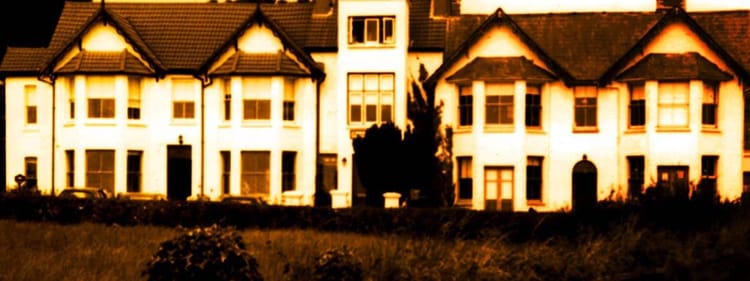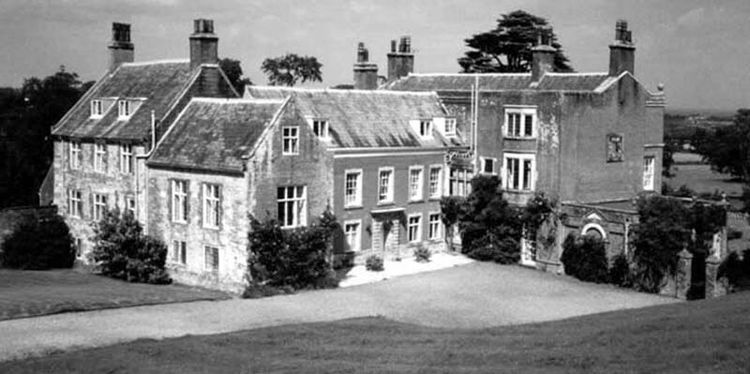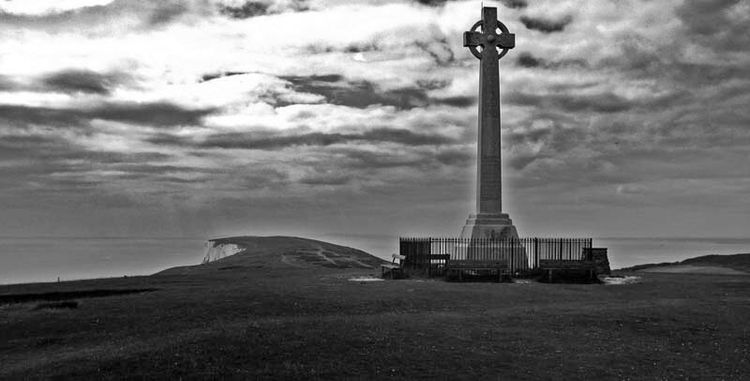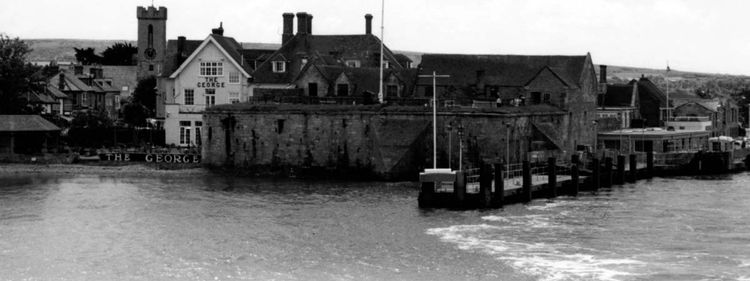St. Andrews Church Chale. Ghosts of the Isle of Wight, with Margo Williams
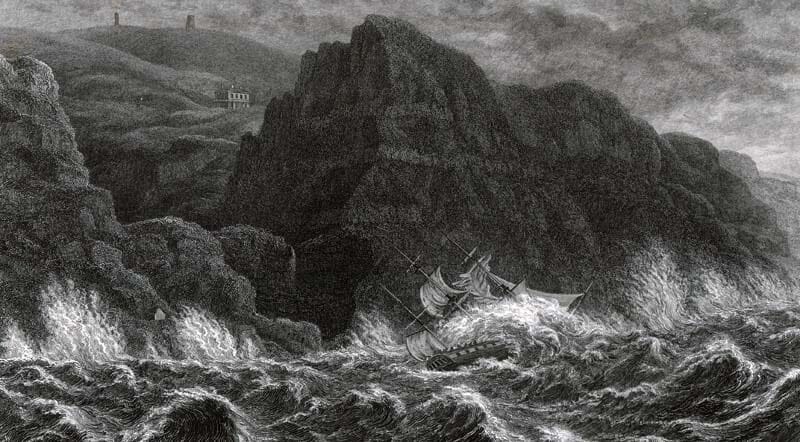
The Clarendon Ghost Girl
THE SOUTHERN tip of the Isle of Wight is a spectacular chasm and glowering dark height named Blackgang Chine.
Its underwater ledge is a ship-k.lling hidden hazard for unwary sea captains.
A light tower and chapel on the hill above signalled warning on clear days and nights. Invisible in mist and of no assistance in storm, its most powerful influence was prayer.
North of the chine is the village of Chale. A ghostly girl is sometimes seen drifting along the road toward the old church and on down to the sea.
Residents believe her to be a ghost from a famous shipwreck of 1836; a tragedy in which all passengers were lost.
Loss of the Clarendon
A 345-ton ship built for trading in the West Indies the SV Clarendon sailed from St. Kitts bound for Portsmouth.
Until the morning of 11th October when a raging storm smashed her onto the shore below Blackgang Chine. Island historian Davenport Adams reported on the tragic event:
‘A crew of sixteen officers and men, commanded by Captain Samuel Walker and ten passengers, men, women and children, were on board. A husband, a wife and their four children, a father and his daughter, a girl hastening to a father’s arms, a friend, a servant; such were the passengers of the Clarendon.’
Adams described the moment the ship broke.
‘The morning dawned dark, cloudy, deadly; right ahead of her rose the fatal cliffs of Chale bay, and though all sail was crowded upon her; nevertheless the cruel waters bore her swiftly to the beach.
She struck once, twice, heeled over. A mighty rush of billows burst upon her and rent her literally in twain! All were lost but three: the second mate and two sailors, who sprang overboard ere the ship struck, were washed on shore.’
Bodies were recovered along the beach; Lieutenant Shore, his wife and four daughters were buried in Newport cemetery.
Everyone else received burial in Chale churchyard. Captain Walker and his lost crew-members; two plantation owners, Sheppard and Walter Pemberton of St. Kitts, and his daughter.
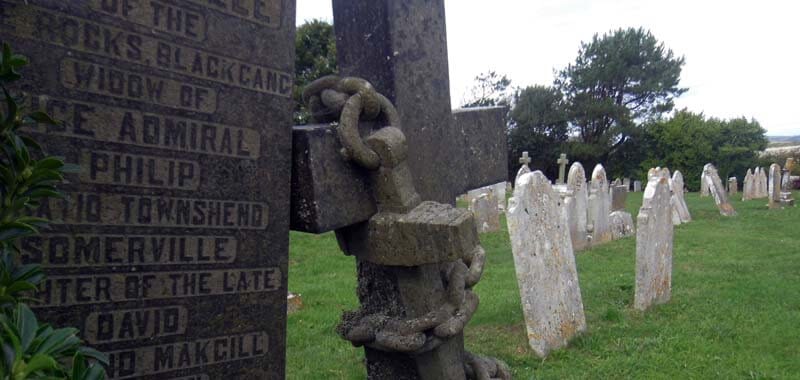
Miss Gourlay is Missing
A missing body mystery remained. Of Miss Gourlay, daughter of Captain Gourlay of Southsea, there was no trace; until weeks later, as Adams noted:
‘I relate a true but affecting circumstance. The corpse of Miss Gourlay was borne away by the waters, and actually cast ashore at Southsea, opposite her father’s residence.’
Those who have seen the ghost of Chale describe a misty figure of a well-dressed young woman, and so believe it to be the lost spirit of Captain Gourlay’s daughter.
Chale village's few buildings cluster half a mile either side of a country road that leads to a junction by the old church of St. Andrew where the graves of those lost from the Clarendon can still be found.
People sometimes ask me if there is a best time to catch a ghost, perhaps the optimum moment between daylight and dusk; or just before dawn. Or maybe on the anniversary of the tragedy in which lives were lost.
This may be true, but it hasn’t ever seemed to matter, in my experience.
A haunted location is a haunted location regardless of time of day or night. However, brightness and daylight activity probably bleach out most people’s sensitivity to supernatural activity.
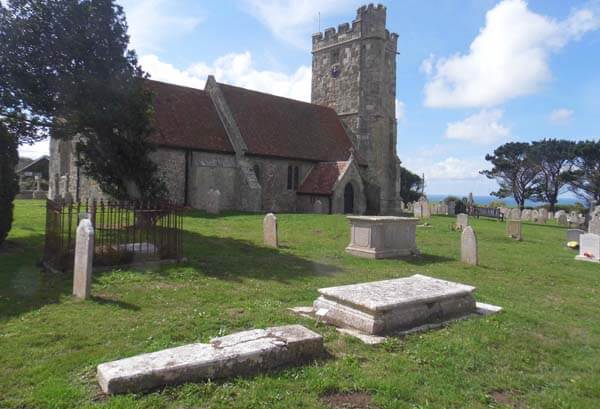
Time at St. Andrews
Assuming the ghost girl to be a victim of the Clarendon shipwreck, I thought to begin investigation in the churchyard.
I don’t ever work alone, not because I am scared of ghosts, which mostly I am not. Caution and friendly support is necessary in hazardous environments such as sea cliffs and crumbling ruined buildings.
That day for accompaniment my husband Walter and Sue, a friend from Shanklin helped search among the gravestone rows of remembered dead.
Here and there towered impressive personal markers of important lifetimes lost; Celtic crosses and obelisks; a guardian angel points her finger heavenward, an open book in other hand.
We wandered the graveyard, spotting names and dates, found Johns and Elizabeths, and beloved George Valentine. Names fading, some altogether vanished.
I knew we wouldn’t find Gourlay’s grave near those others lost in that storm; she was buried in Southsea. In fact I wondered why she remained in Chale as a ghost.
Two of the church tower clock faces offered the correct time of our graveyard search and of everyone’s queued moment in their wait for Resurrection. 2.30 pm, but the third clock face read three minutes ahead.
By the time all hands had passed 3 pm there was no sign of a ghost. I sensed nothing, that mid-summer day.
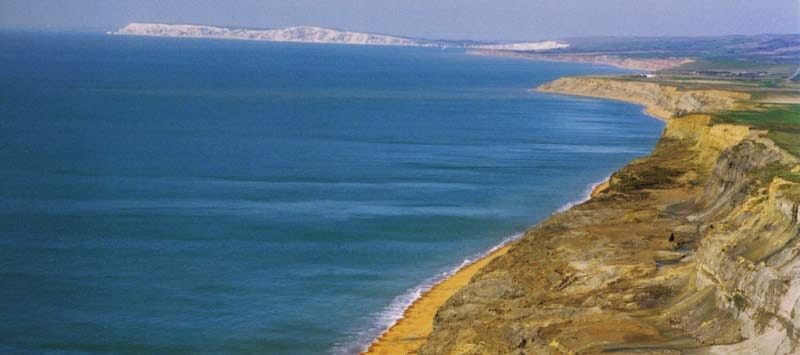
Ghost on the Clifftop
We headed for the sea cliffs. Opposite Church Place, at the crossing of Blythe Shute, the road runs seaward, past a terrace of old grey houses.
The cliff top path ran north from the crumbling Jurassic heights of Blackgang Chine, to the distant chalk cliffs of Tennyson Down.
The shoreline presented several miles of storm-snatched edge; fallen soft ground spilled onto the red-gold sanded beach fifty feet below. We headed southward.
There she was.
I saw a misted figure of a young woman, not staring out to sea toward the place where the ship foundered, she was looking at the ground. Chamomile daisies bloomed in profusion in the sandy soil. I drew close, paper and pencil in hand ready to record; asked a question. “Why are you here?”
“…I had been very ill,” she replied, matter of factly. “And was sent to a large house nearby to regain my strength. My aunt lived there. I missed London, Vauxhall, the routs and all the latest fashions. My cousins were so old-fashioned.”
I sensed she was inspecting us; a note of impatient disapproval in her tone as she continued her story of how she came to be on the sea cliffs.
“I had brought several gowns of sarsenet and three of gauze; they wore jaconet and even had an old-fashioned kersymere. I hated the way they laughed at me, and they disapproved of the paints I put on my face. I often pretended my complexion was natural.”
She paused, perhaps anticipating a remark. I said nothing; couldn’t see face for mist. Perhaps satisfied that no criticism was forthcoming, she continued.
“I met a woman who lived at a small farm and arranged for her to meet me and perform errands for me. She then became my personal maid while I stayed here. She came to the house four days a week to tend my clothes.
I asked her to buy me some spirit lavender, some pomatum and some alkanet root as I wished to make some rouge from the latter.
We met out here; she was on her way home from meeting her lover. I liked walking the fields. Offered her newly minted money should she perform these errands. Later the lazy woman informed me they had no alkanet root in Newport.
I was cross, as she demanded the money. I threw some coins at her; one is still near where you are."
I looked down expecting to see a newly minted coin.
"I wanted to punish her for her insolence," the ghost continued. "So I dampened the bodice of my gown, many fashionable ladies did this. I then put it in front of the fire in my bedchamber. It fell, and I watched it burn on the rug.
I then called to her. She came running in and beat out the flames, burning her hands and arms."
The ghost paused, thoughtful perhaps on that accident.
"I told my aunt she had put the gown in front of the fire. She was dismissed, as one of her hands was useless after this incident. I did not care, I only wished to return to London which I did shortly after.
When I died, several years later, I found myself here where the coin still lays. You can find it in the daisies and sand.”
Evidently the ghost was not Miss Gourlay; she claimed to have stayed at her aunt’s house in Chale village.
Buried Treasure
I read her explanation and request to Sue and Walter; wondering over the unfamiliar words: ‘Sarsanet’. ‘Kerseymere’; what were these? Or ‘Jaconet’ and ‘Alkanet’? We had no idea.
“Something to do with fashion and makeup?” asked Walter. It seemed a hopeless task to find a coin among the abundant daisies in the sandy soil. Half an hour of search turned up nothing but stalks and pebbles; twenty minutes more and a sense of impossibility clouded our efforts.
There! I noticed a small beam of silvered light.
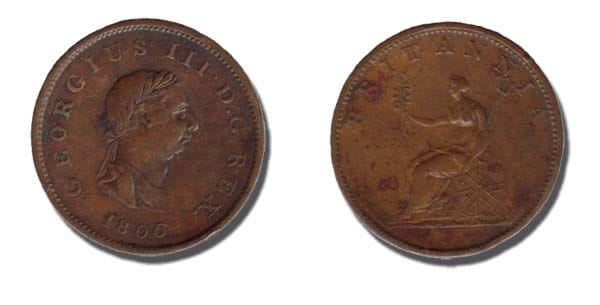
WE DUG down into the ground several inches deep and unearthed a coin. Walter scraped it clean of soil to reveal a King George III penny dated 1806.
The ghost spoke again to scold our efforts and offer some advice.
“So you found it,” she said. “You took long enough! I always expect folk to obey me immediately, not tarry over their work. Never mind, I have learned to have a forgiving nature now, so I forgive you, which I think is very kind of me."
She paused to wait momentarily for my agreement on that.
"You are not at all fashionable, neither is the other lady. You would both look far more fetching in sarsanet. See to this please.
Now I can get along the path to the next world. I expect to be welcomed by several gentlemen. My name is Charlotte, a name favoured by royalty. Fare you well in your day and age.”
Identifying the Dead. The Ghost Girl of Chale
I had no idea of Miss Gourlay’s first name but it made no difference even if it was Charlotte for this was not the spirit of the drowned girl.
She said her coin was newly minted which dates her testimony to 1806 or 1807, long before the Clarendon disaster.
Her residency was only a brief stay; without a surname it is impossible to confirm identity. One of the closest and largest of houses in Chale is Chale Abbey inland at the eastern edge of the village, away from the cliffs.
Its location explains why Chale’s ghost girl was so often seen drifting through the village.
The building dates from the 14th century; local records confirm it belonged to Captain Richard Worsley’s son Thomas and remained in their family until early 1800s when the farm changed ownership; purchased circa 1810 by two brothers named Jacob.
Was Charlotte related to the Worsleys or Jacobs? A brief residence in life, extended after death during which time Charlotte the ghost of Chale had learned the value of forgiveness but evidently not lost her eye for fashion; unexpected victim though she was.
We were amused by her criticism. I wore a cotton skirt and T-shirt decorated with leopards; Sue was dressed in jeans and a Disneyland T-shirt.
So the ghostly girl of Chale was not Miss Gourlay. It was not her doom to be returned to the scene of that disaster.
Despite the seeming impossibility of many miles of contrary currents, rocky bays, coves and headlands Miss Gourlay would not let mere shipwreck and death bar her corpse’s journey home.
How she accomplished that, when everyone else washed up on the Blackgang shore, remains one of the Isle of Wight’s most famously forgotten mysteries.
Thank you for your company in this short tour of Isle of Wight mysteries. If you would like to know more of what happened to ghost hunter Margo Williams and the ghosts of St. Catherine's Tower and Chale, and other famous and forgotten ghosts, read this book. Now available from Amazon.

